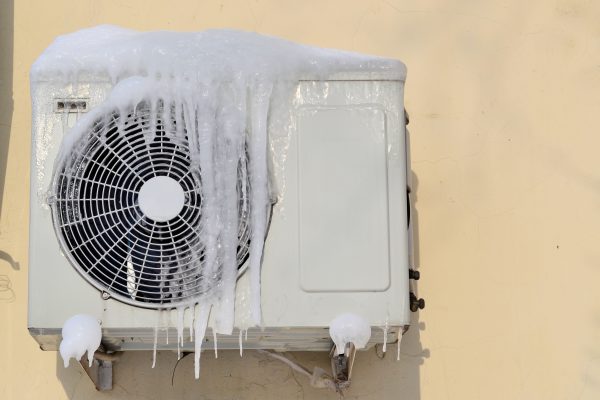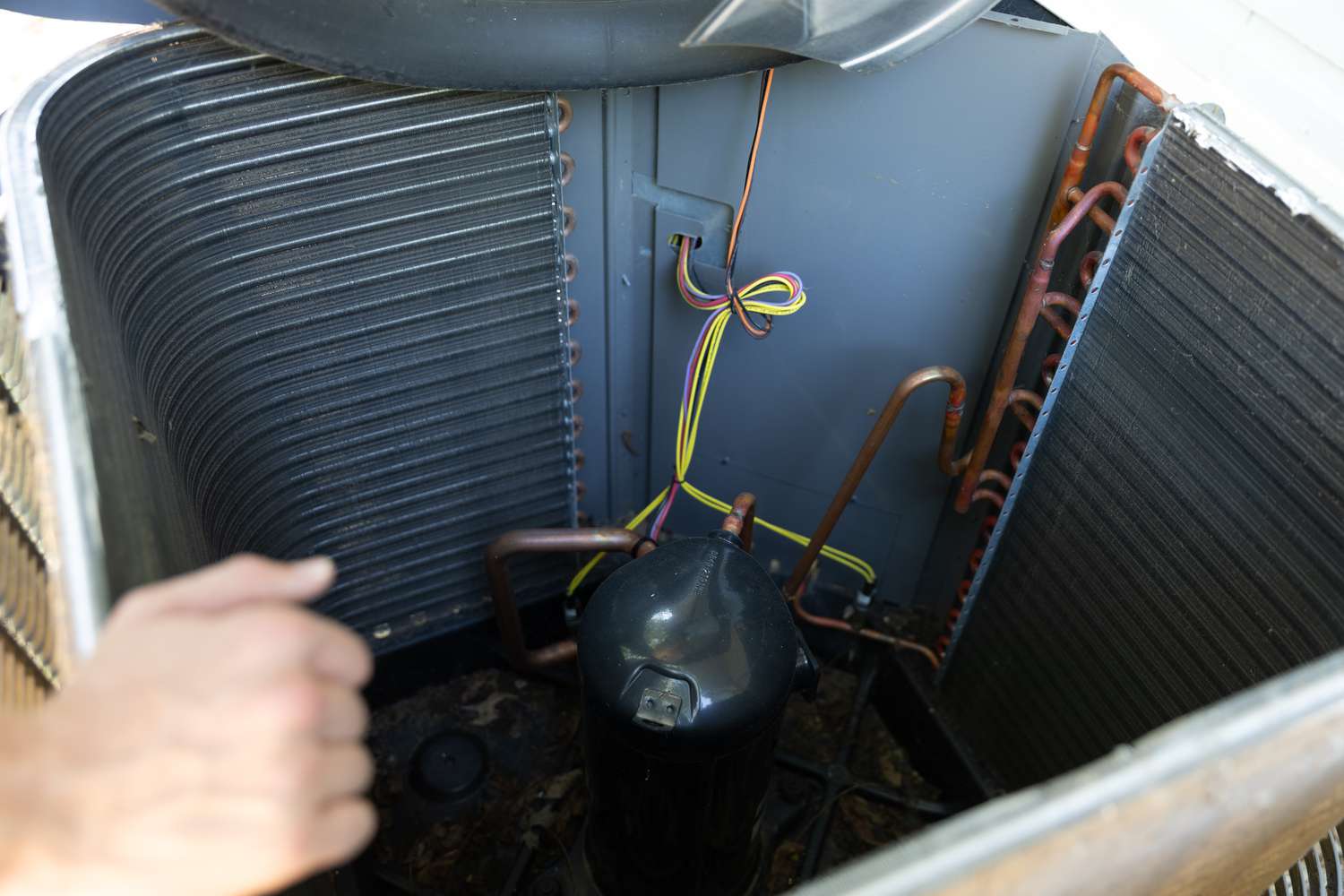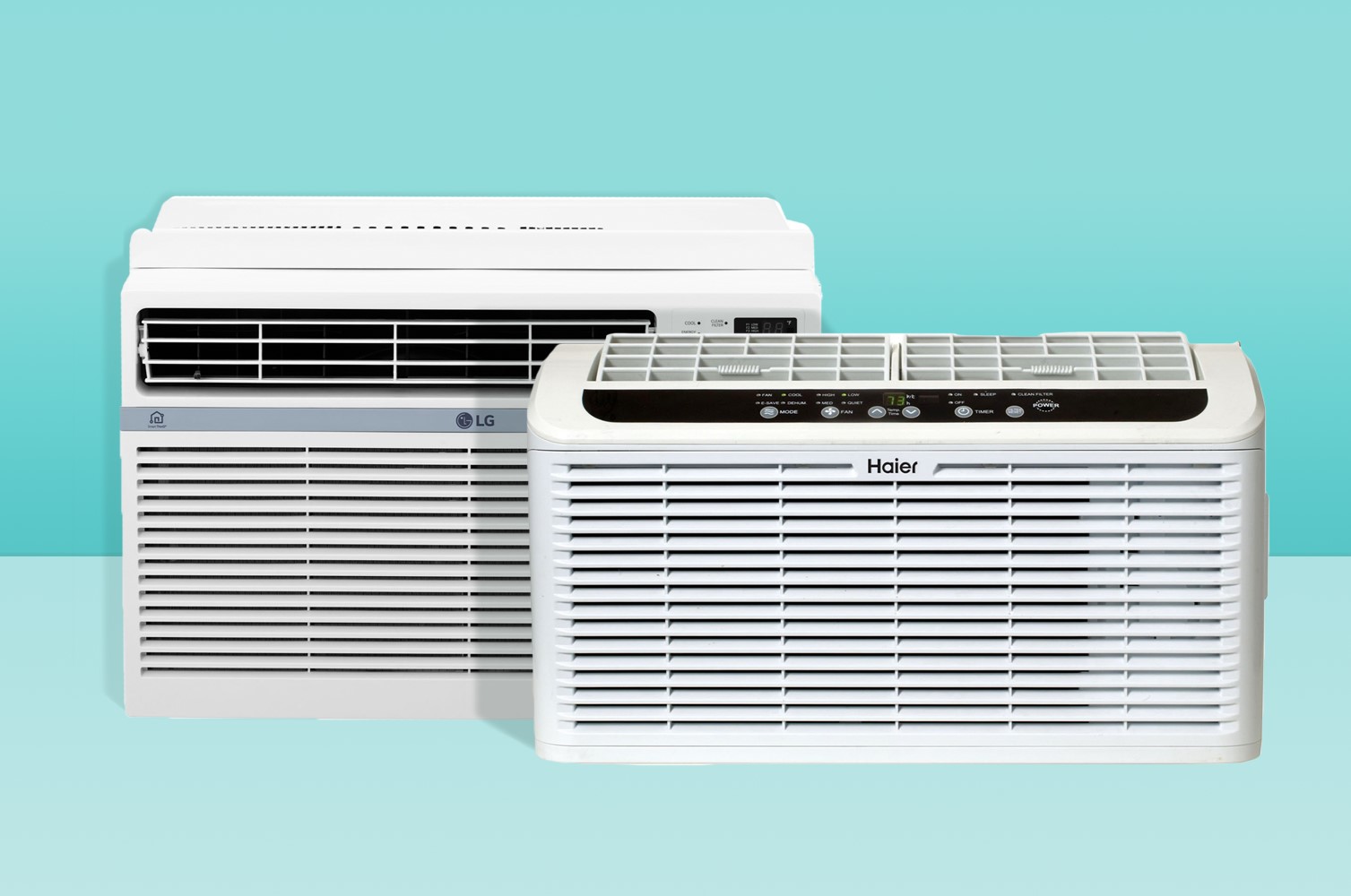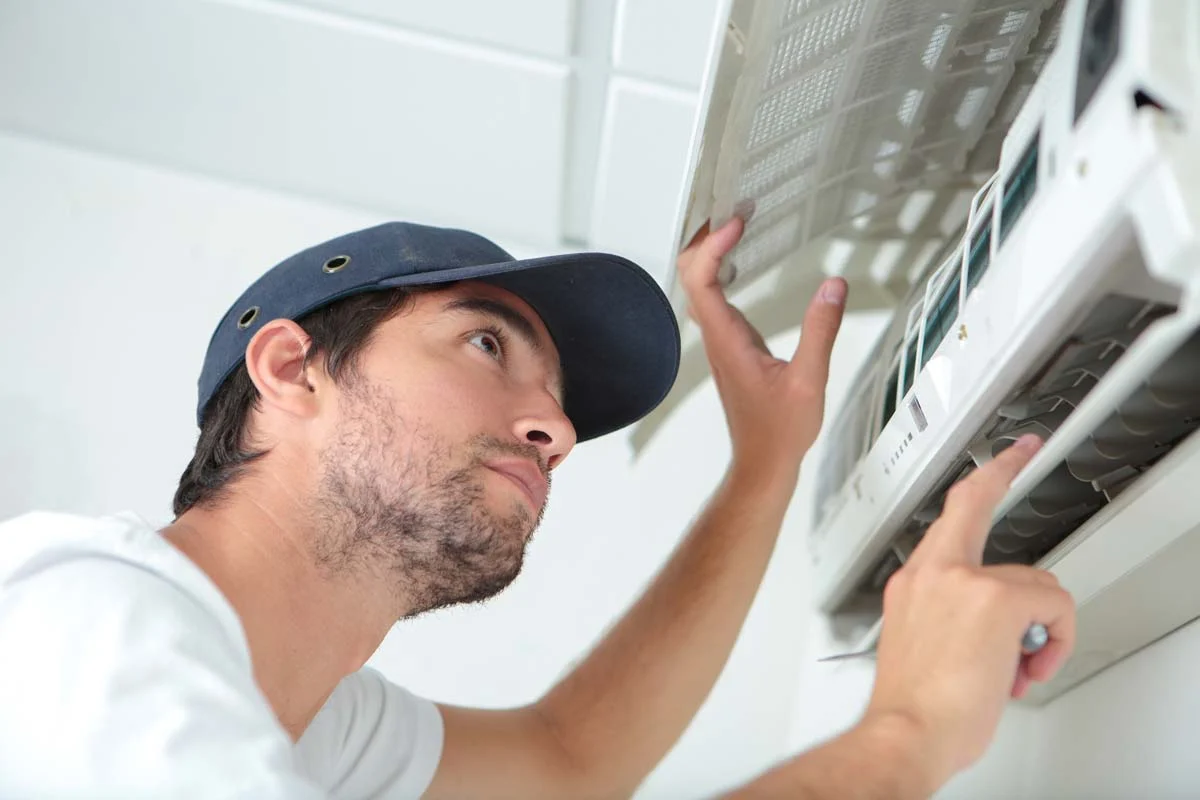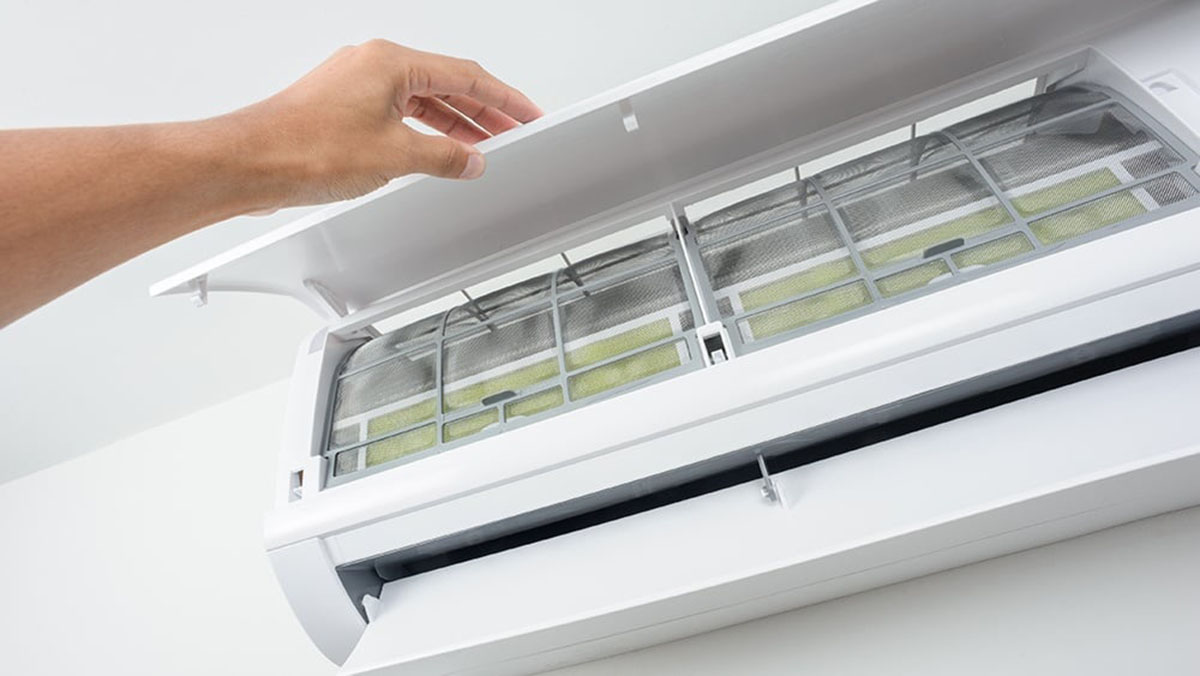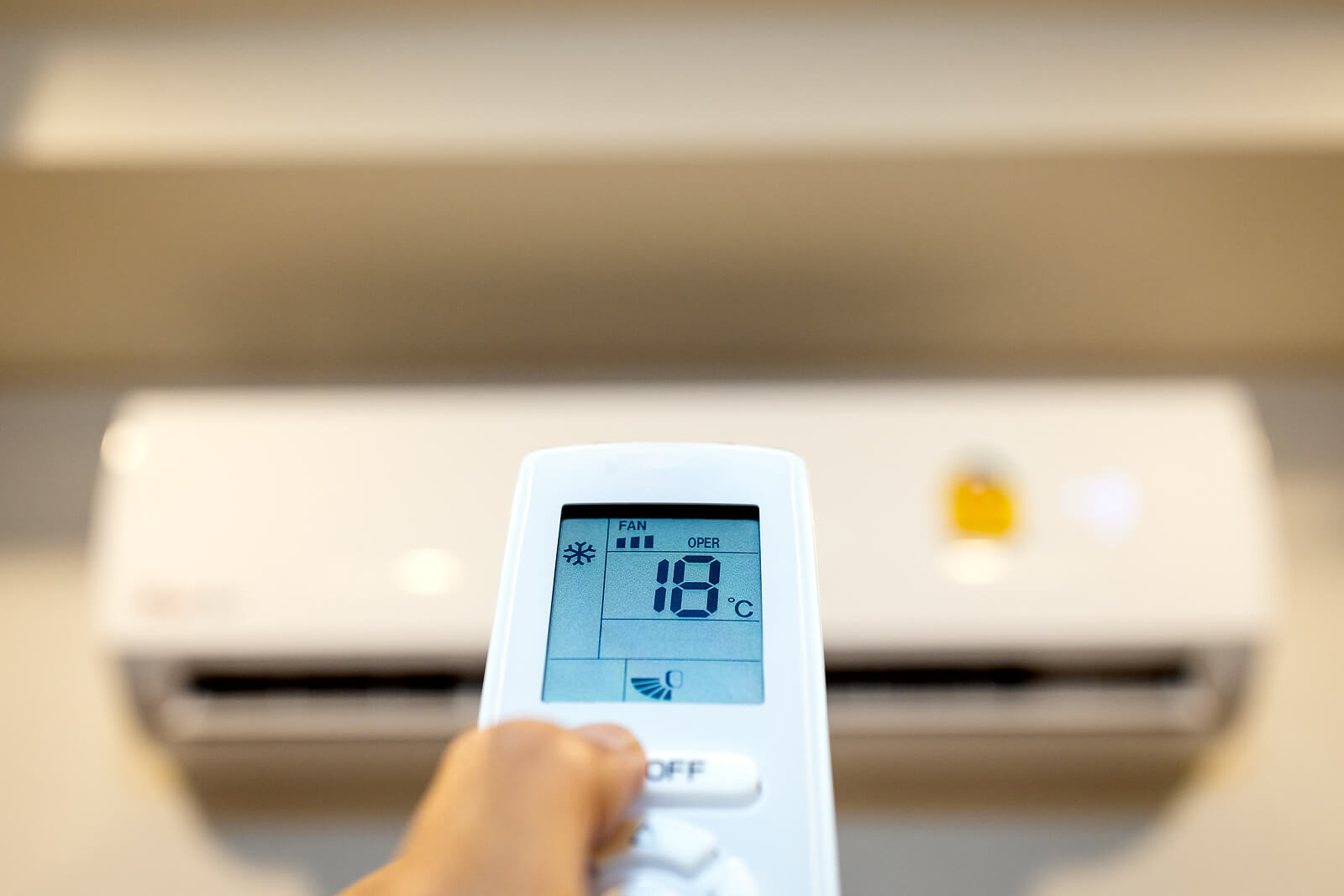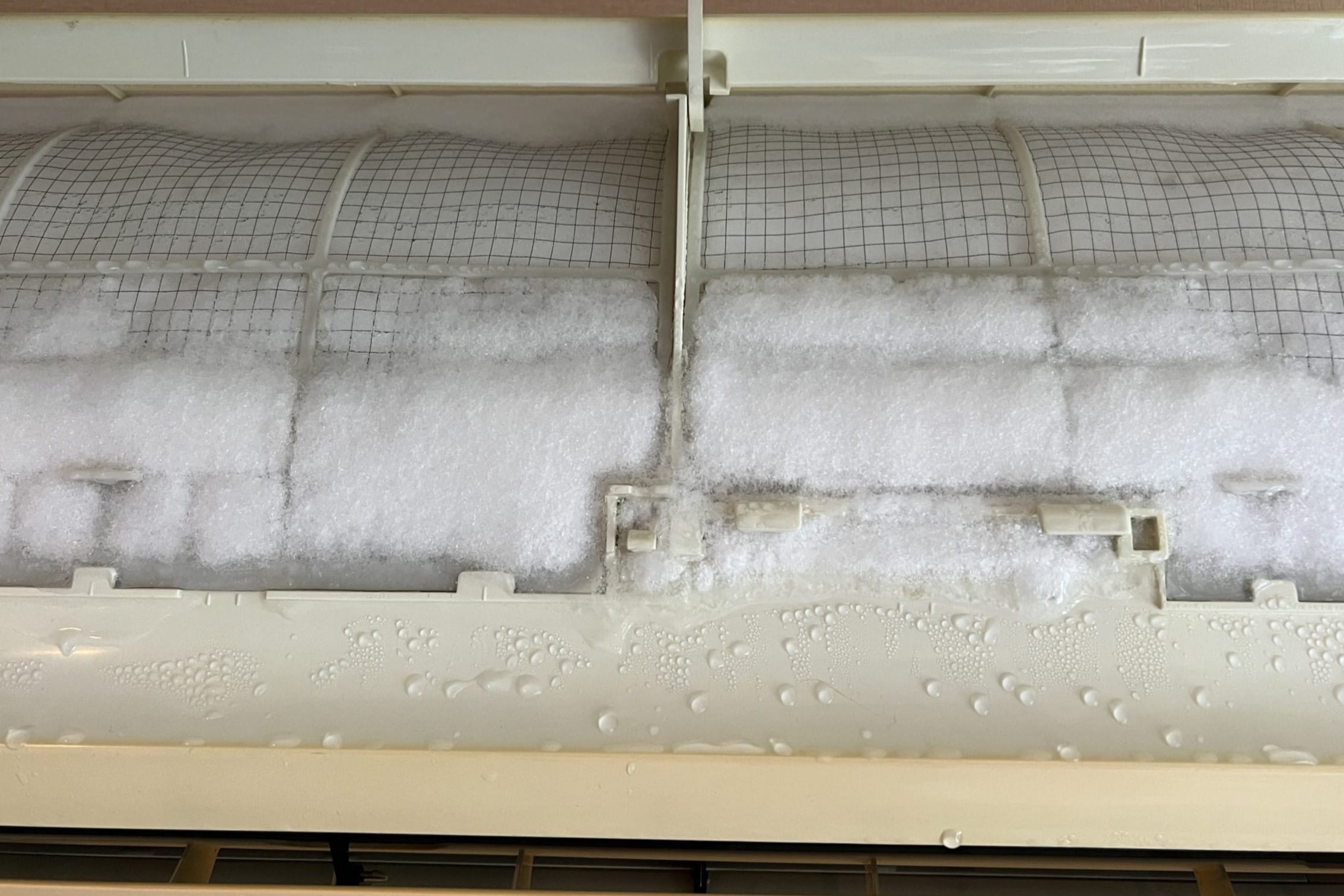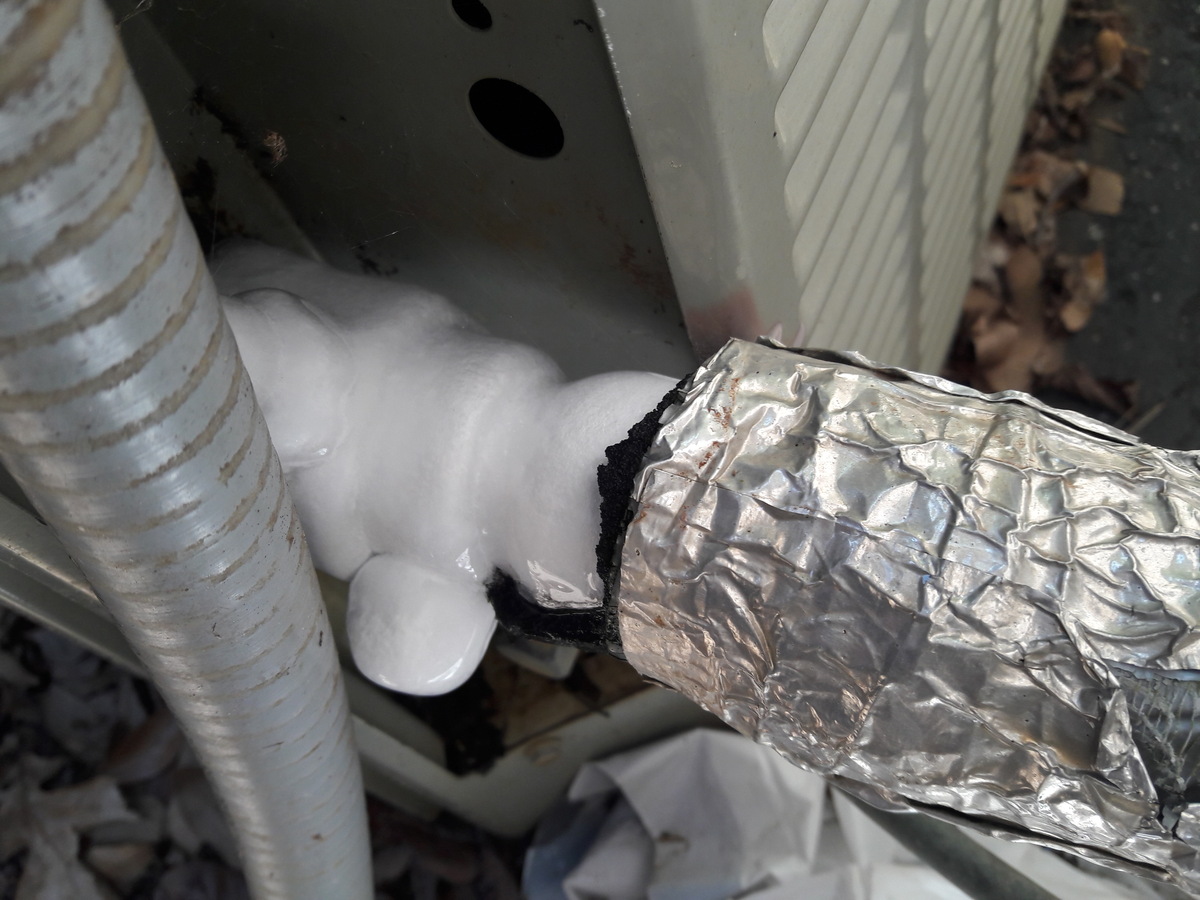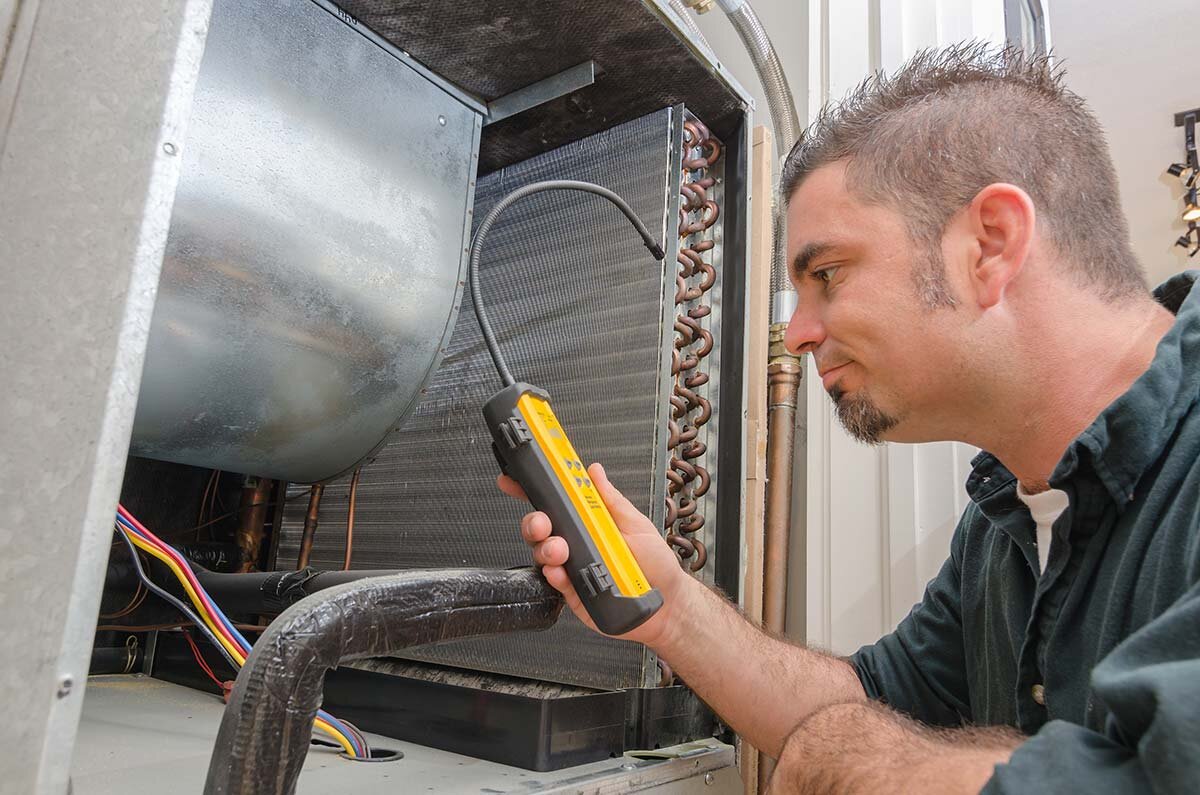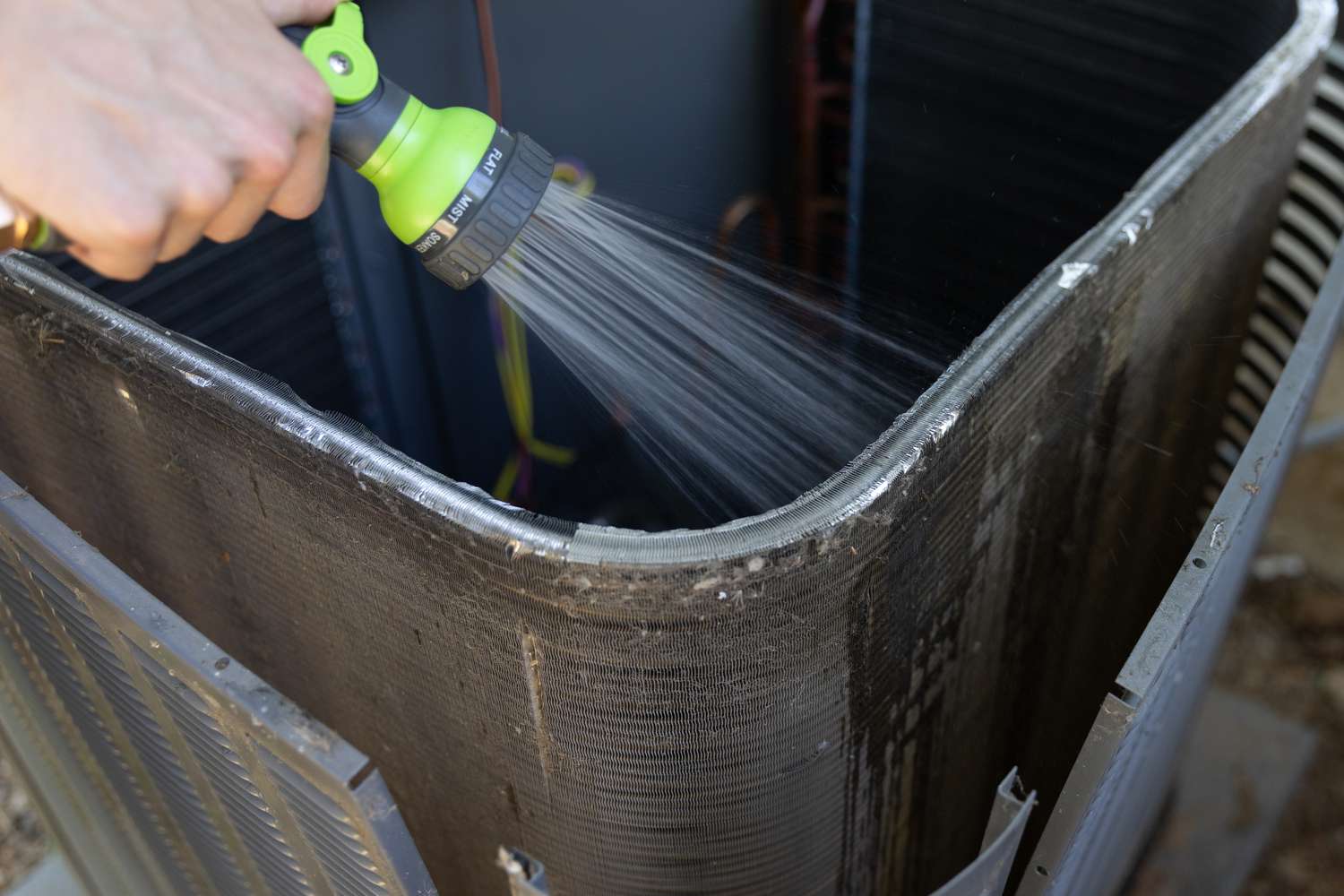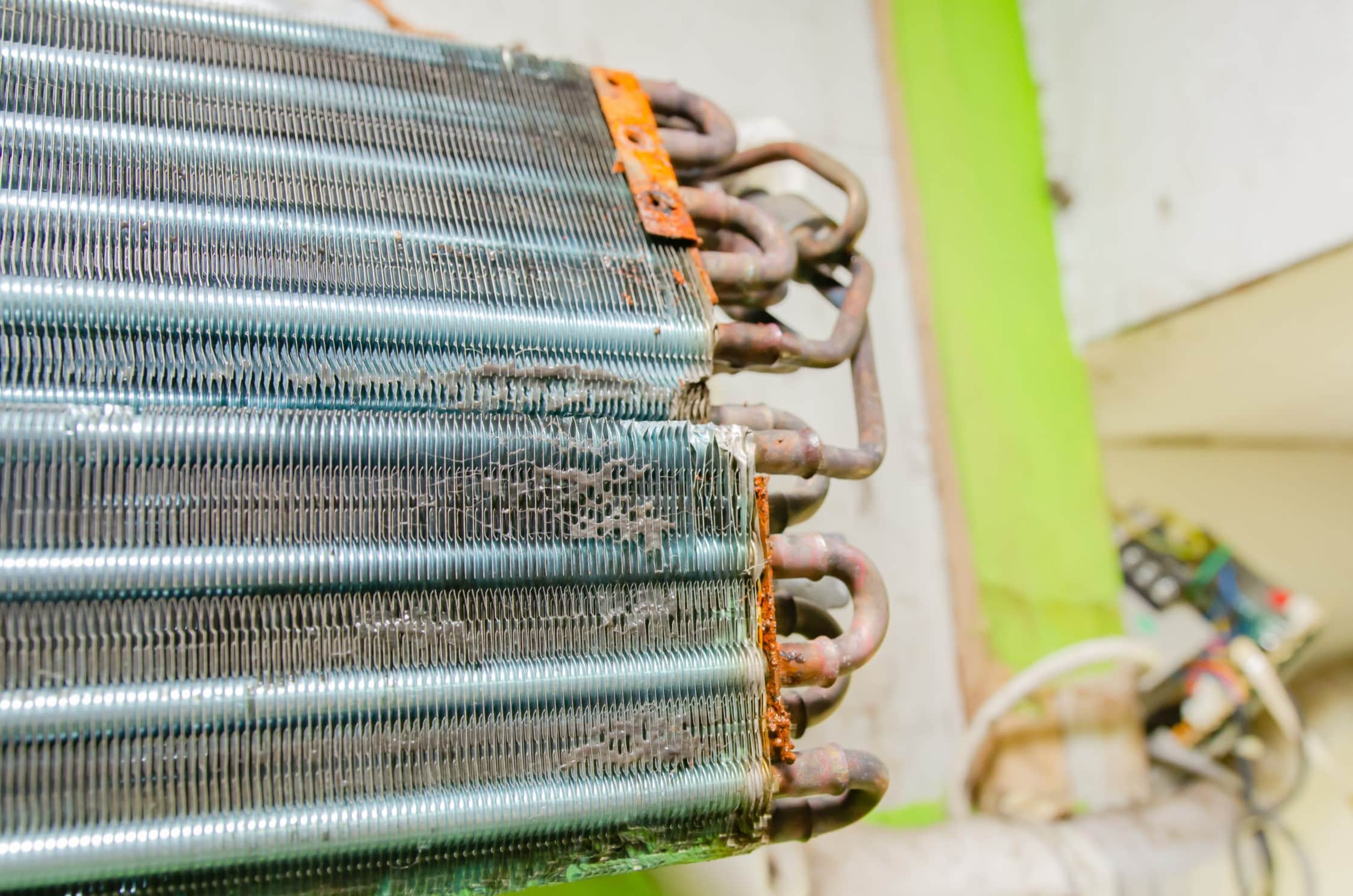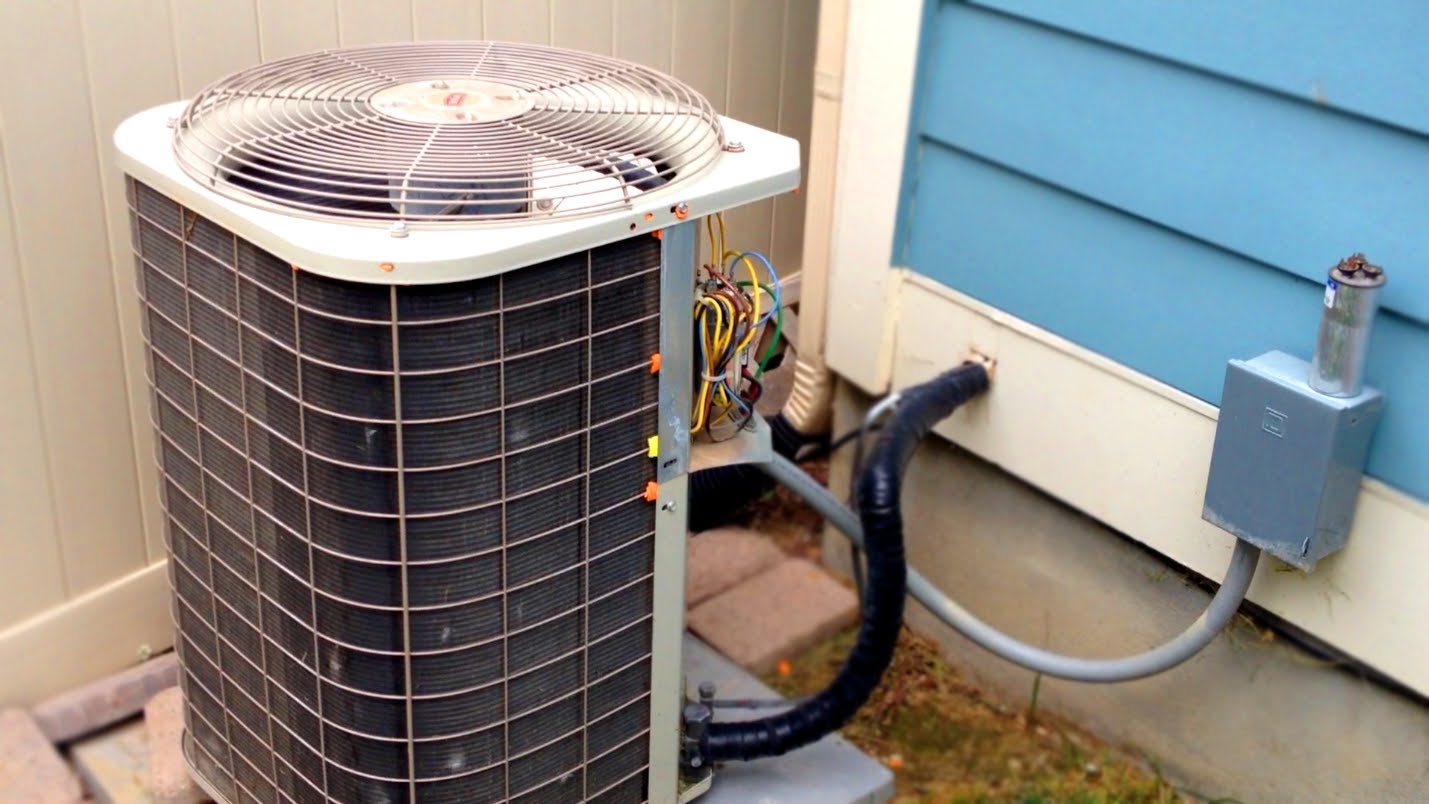Home>Home Maintenance>Why Do Coils Freeze On An Air Conditioner
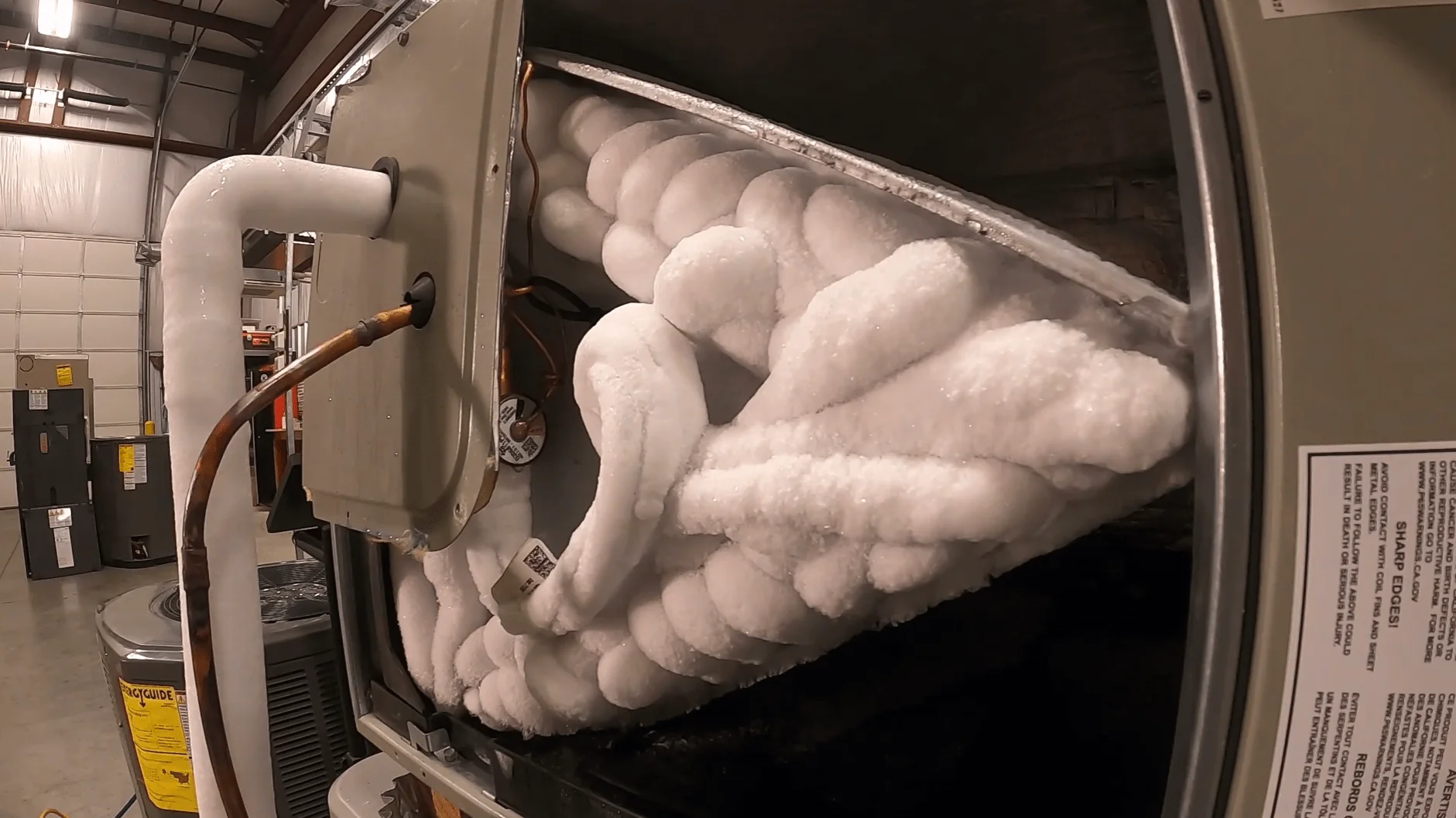

Home Maintenance
Why Do Coils Freeze On An Air Conditioner
Modified: March 24, 2024
Prevent freezing and costly repairs with regular home maintenance. Learn why air conditioner coils freeze and how to keep them running smoothly.
(Many of the links in this article redirect to a specific reviewed product. Your purchase of these products through affiliate links helps to generate commission for Storables.com, at no extra cost. Learn more)
Introduction
When it comes to staying cool and comfortable during the hot summer months, air conditioners play a crucial role. These machines work tirelessly to cool the indoor air by removing heat and humidity from the space. However, there are times when the coils in the air conditioner can freeze, causing the whole system to malfunction. Understanding why the coils freeze can help homeowners prevent this issue and maintain the efficiency of their air conditioning system.
In this article, we will delve into the reasons behind coil freezing and explore various preventive measures to ensure that your air conditioner operates smoothly and efficiently. So, let’s dive in and unravel the mystery of frozen air conditioner coils.
Key Takeaways:
- Regular maintenance and proper insulation are crucial to prevent air conditioner coil freezing. Ensuring sufficient airflow and addressing refrigerant leaks promptly are key for efficient cooling and system longevity.
- Blocked vents, dirty filters, and fan issues can lead to coil freezing. Regular maintenance, proper insulation, and addressing refrigerant leaks are essential for efficient and reliable air conditioning.
How Does an Air Conditioner Work?
Before we delve into the causes of coil freezing, it’s important to have a basic understanding of how an air conditioner works. Air conditioners operate on the principle of refrigeration, utilizing a closed-loop system of refrigerant to transfer heat from inside your home to the outside.
The process begins with the compressor, which pressurizes the refrigerant and raises its temperature. The hot, pressurized gas then flows into the condenser coil located outside the home. As the refrigerant passes through the condenser coil, it releases heat to the outside environment and cools down, transforming into a high-pressure liquid.
Next, the refrigerant enters the expansion valve, where its pressure is reduced. This causes the liquid to evaporate, absorbing heat from the indoor air. The evaporator coil, located inside the air handler or furnace, is responsible for facilitating this heat exchange. As the warm air from your home passes over the cold evaporator coil, the heat is absorbed by the refrigerant, resulting in cooler air being circulated back into the living space.
Finally, the refrigerant, now in its gaseous state, returns to the compressor to repeat the cycle. This continuous process of heat absorption and release allows the air conditioner to maintain a cool indoor environment.
Now that we have a basic understanding of how an air conditioner works, let’s explore some common culprits behind frozen coils.
What Causes Coils to Freeze?
There are several factors that can contribute to the freezing of air conditioner coils. Understanding these causes is essential for troubleshooting and preventing this issue. Let’s take a closer look at the main culprits:
- Insufficient Airflow: If the airflow across the evaporator coil is restricted, it can lead to a drop in temperature and excessive condensation, causing the coil to freeze. Common causes of restricted airflow include blocked vents, closed or blocked registers, and dirty or clogged air filters. When the airflow is restricted, the refrigerant does not absorb enough heat, and the evaporator coil becomes too cold.
- Low Refrigerant Levels: The refrigerant in the air conditioning system plays a crucial role in heat transfer. If the system develops a refrigerant leak or has insufficient levels of refrigerant, it can lead to inadequate heat absorption in the evaporator coil. As a result, the coil may become colder than normal, causing condensation to freeze and obstruct the airflow.
- Dirty Air Filters: Air filters are designed to trap dust, dirt, and other airborne particles to maintain indoor air quality. When these filters become clogged with debris, it obstructs the airflow and reduces the efficiency of the air conditioner. Restricted airflow can result in the evaporator coil becoming too cold and eventually freezing over.
- Fan Problems: The fan in the air handler or furnace is responsible for circulating air across the evaporator coil. If the fan is not functioning properly, whether due to a faulty motor, worn-out belts, or a loose connection, it can disrupt the airflow and contribute to coil freezing.
- Thermostat Issues: A malfunctioning thermostat can cause the air conditioner to run longer than necessary, leading to excessive cooling and potential coil freezing. It is essential to ensure that the thermostat is properly calibrated and functioning accurately.
- Damaged or Blocked Coils: Physical damage to the evaporator coil or obstructions such as debris or vegetation can impede the heat transfer process. This can result in insufficient heat absorption, causing the coil to freeze.
Understanding these causes is the first step in preventing coil freezing. In the next section, we will explore preventive measures to keep your air conditioner operating efficiently.
Insufficient Airflow
Insufficient airflow is one of the primary reasons for coil freezing in an air conditioning system. When the airflow across the evaporator coil is restricted, it hampers proper heat transfer and can lead to the formation of ice on the coil. There are several factors that can contribute to insufficient airflow:
- Blocked Vents: Blocked vents, registers, or grilles can restrict the flow of air into the system. It is crucial to ensure that these openings are clear of any obstructions, such as furniture, curtains, or other objects.
- Closed Registers: If you have some rooms in your house that are not frequently used, it may be tempting to close the air registers in those areas. However, this can create an imbalance in the airflow and lead to reduced airflow across the evaporator coil, increasing the risk of freezing.
- Dirty or Clogged Air Filters: Air filters are designed to trap dust, dirt, and other airborne particles, but they can become clogged over time. When the air filter is dirty or clogged, it restricts the airflow and reduces the efficiency of the air conditioning system. Regularly cleaning or replacing air filters is crucial to ensure proper airflow and prevent coil freezing.
- Blocked Return Air Ducts: The return air ducts are responsible for delivering air from inside your home to the air conditioner. If these ducts are obstructed or blocked, it can limit the amount of air being pulled into the system, resulting in decreased airflow across the evaporator coil.
To prevent coil freezing caused by insufficient airflow, follow these steps:
- Regularly check and clean the air filters. If the filters are reusable, clean them according to the manufacturer’s instructions. Otherwise, replace them with new ones.
- Ensure that all vents, registers, and grilles are free from obstructions. Consider rearranging furniture or removing objects that may block the airflow.
- If you have closed registers in unused rooms, open them to maintain a balanced airflow throughout the system.
- Inspect and clear any blockages in the return air ducts. Make sure that the ducts are free from debris, furniture, or other obstructions.
By ensuring sufficient airflow, you can prevent the coils from freezing and maintain the efficiency of your air conditioning system.
Low Refrigerant Levels
Another common cause of coil freezing in an air conditioning system is low refrigerant levels. The refrigerant is the substance responsible for absorbing and releasing heat in the air conditioning cycle. When the refrigerant levels are low, it affects the overall performance of the system and can lead to coil freezing.
Several factors can contribute to low refrigerant levels:
- Refrigerant Leak: Over time, small leaks can develop in the refrigerant lines, coil connections, or other components of the system. These leaks can result from corrosion, worn seals, or physical damage. When refrigerant leaks occur, the system gradually loses its refrigerant charge, leading to decreased cooling efficiency and an increased risk of coil freezing.
- Inadequate Initial Charge: If there was an error during the installation of the air conditioning system, it’s possible that it was not properly charged with the correct amount of refrigerant. In such cases, the system may not have had the optimal refrigerant level from the beginning, which can lead to issues like coil freezing.
Low refrigerant levels can disrupt the heat transfer process in the evaporator coil. When there is insufficient refrigerant, it reduces the ability of the coil to absorb heat from the indoor air. As a result, the temperature of the coil drops significantly, causing condensation to form and eventually freeze.
If you suspect low refrigerant levels in your air conditioning system, it’s essential to consult a professional HVAC technician. They will be able to inspect the system, locate any refrigerant leaks, and recharge the system with the correct amount of refrigerant.
Preventing coil freezing due to low refrigerant levels involves regular maintenance and prompt repair of any leaks. Follow these tips to help maintain proper refrigerant levels:
- Schedule regular maintenance for your air conditioning system. During these maintenance visits, the technician will check the refrigerant levels and perform any necessary adjustments.
- If you notice any signs of a refrigerant leak, such as hissing sounds, bubbling on the refrigerant lines, or a decline in cooling performance, contact a professional HVAC technician immediately to diagnose and repair the issue.
By addressing low refrigerant levels promptly, you can prevent coil freezing and ensure the efficient operation of your air conditioning system.
Read more: Why Is My RV Air Conditioner Freezing Up
Dirty Air Filters
Dirty air filters are a common culprit behind coil freezing in air conditioning systems. Air filters are designed to trap dust, dirt, and other particles from the incoming air, ensuring cleaner indoor air quality. However, over time, these filters can become clogged with debris, obstructing the airflow and reducing the efficiency of the system.
When air filters are dirty, it restricts the amount of air that can pass through the filter and reach the evaporator coil. This restricted airflow can cause the temperature of the coil to drop below freezing and lead to ice formation. The frozen coil not only inhibits the cooling process but can also cause damage to the compressor and other components of the air conditioner.
To prevent coil freezing due to dirty air filters, it is important to regularly inspect and clean or replace them. Here’s what you can do:
- Check the air filters: Locate the air filters in your system. They are typically found in the air handler or furnace unit, and sometimes in the return air registers. Take note of the type and size of the filters to ensure you purchase the correct replacements.
- Clean or replace the filters: If the filters are reusable, follow the manufacturer’s instructions for cleaning. This may involve rinsing with water or vacuuming off the accumulated dust and dirt. If the filters are disposable, replace them with new ones.
- Maintain a regular cleaning schedule: The frequency of cleaning or replacing the air filters depends on several factors such as the type of filter, the air quality in your area, and the usage of your air conditioning system. As a general rule, it is recommended to clean or replace the filters every one to three months.
Regularly cleaning or replacing your air filters helps to maintain proper airflow through the system and reduces the chances of coil freezing. It also improves indoor air quality and prolongs the lifespan of your air conditioning equipment.
Fan Problems
The fan in the air handler or furnace is responsible for circulating air across the evaporator coil. If there are any issues with the fan, it can disrupt the airflow and contribute to coil freezing. Here are some common fan problems that can lead to this issue:
- Faulty Motor: The fan motor is the component that drives the fan blades to rotate and circulate the air. If the motor is damaged or worn out, it may not function properly, resulting in inadequate airflow across the evaporator coil. This can cause the coil to become extremely cold and freeze.
- Worn-out Belts: In some air conditioning systems, the fan motor is connected to the fan blades through a belt. Over time, these belts can become worn out or loose, affecting the performance of the fan. If the belts are not properly tensioned or need to be replaced, it can lead to reduced airflow and potential coil freezing.
- Loose or Damaged Fan Blades: The fan blades themselves can also contribute to airflow problems if they are loose or damaged. If the blades are not securely attached to the motor shaft or are bent or cracked, it can cause the fan to operate inefficiently and result in insufficient airflow across the evaporator coil.
- Electrical Issues: Problems with the electrical connections or controls of the fan can also lead to fan malfunctions. Faulty wiring, loose connections, or issues with the fan relay can cause the fan to operate intermittently or not at all, resulting in poor airflow and potential coil freezing.
If you suspect fan problems as the cause of coil freezing in your air conditioning system, it is best to seek professional assistance from an HVAC technician. They will be able to diagnose and fix any issues with the fan motor, belts, blades, or electrical components.
Regular maintenance and inspection of the fan can also help prevent coil freezing. Here are some tips to ensure the proper functioning of the fan:
- Schedule regular maintenance for your air conditioning system, which should include a thorough inspection of the fan and its components.
- Listen for any unusual noises coming from the fan, such as grinding or squealing sounds, which could indicate a problem.
- If you notice any issues with the fan, such as loose blades or a faulty motor, contact a professional HVAC technician to address the problem promptly.
By ensuring the proper operation of the fan, you can maintain a steady airflow across the evaporator coil and minimize the risk of coil freezing in your air conditioning system.
Thermostat Issues
A malfunctioning thermostat can contribute to coil freezing in your air conditioning system. The thermostat is responsible for controlling the temperature and operating cycles of the system. If the thermostat is not functioning properly, it can cause the air conditioner to run longer than necessary, leading to excessive cooling and an increased risk of coil freezing.
Here are a few common thermostat issues that can impact the proper operation of your air conditioning system:
- Misreading Temperature: If the thermostat is misreading the temperature in your home, it may not accurately control the cooling cycles. This can result in the air conditioner running longer than needed, causing the evaporator coil to become excessively cold and lead to coil freezing.
- Calibration Problems: Over time, thermostats may become miscalibrated. This means that the temperature settings may not correspond accurately to the actual temperature in the room. If the thermostat is miscalibrated, it can cause the air conditioner to cycle on and off irregularly, leading to inefficient cooling and potential coil freezing.
- Wiring Issues: Problems with the electrical wiring connecting the thermostat can also cause issues. Loose connections or damaged wires can disrupt the communication between the thermostat and the air conditioning system, leading to erratic behavior and potential coil freezing.
- Incorrect Placement: The placement of the thermostat can also impact its performance. If the thermostat is located in an area that is too hot or too cold, such as near a heat source or drafty area, it may not accurately sense the temperature in the rest of the house. This can result in improper cooling cycles and an increased risk of coil freezing.
If you suspect thermostat issues as the cause of coil freezing, it is advisable to consult a professional HVAC technician. They can inspect and diagnose any problems with the thermostat and make the necessary repairs or adjustments.
To prevent coil freezing due to thermostat issues, consider the following tips:
- Ensure that the thermostat is properly calibrated. If you suspect miscalibration, consult a professional technician to adjust the thermostat settings accurately.
- Check the location of the thermostat. Make sure it is placed in a central area of your home, away from any heat sources or drafts, to provide an accurate temperature reading.
- If you notice any erratic or inconsistent behavior from your thermostat, such as frequent on/off cycling or inaccurate temperature readings, have it inspected by a professional technician.
- Consider upgrading to a programmable thermostat, which allows you to set different temperature settings for different times of the day. This can help optimize cooling cycles and reduce the risk of coil freezing.
By addressing thermostat issues promptly and ensuring accurate temperature control, you can minimize the chances of coil freezing in your air conditioning system.
Regularly changing the air filter in your air conditioner can help prevent the coils from freezing. A dirty filter restricts airflow, causing the coils to get too cold and freeze.
Damaged or Blocked Coils
Damaged or blocked coils can be a significant cause of coil freezing in an air conditioning system. The evaporator coil, located inside the air handler or furnace, is responsible for absorbing heat from the indoor air. However, if the coil is damaged or obstructed, it can disrupt the heat transfer process and lead to coil freezing.
There are a few possible reasons for damaged or blocked coils:
- Physical Damage: The evaporator coil can sustain physical damage due to various factors, such as accidental impact, corrosion, or wear and tear over time. Damaged coils may have bent or distorted fins, punctures, or other structural issues that impede proper heat transfer.
- Obstructions: Coils can also become blocked or obstructed by debris, dust, pet hair, or other particles that accumulate over time. These obstructions restrict the airflow and prevent the coil from effectively absorbing heat, leading to a drop in temperature and the potential for coil freezing.
- Blocked Drain Line: The drain line is connected to the evaporator coil and is responsible for removing excess moisture from the coil. If the drain line becomes blocked or clogged, it can cause water to accumulate around the coil, eventually freezing and obstructing proper airflow.
If you suspect a damaged or blocked coil as the cause of coil freezing in your air conditioning system, it is recommended to seek professional assistance from an HVAC technician. They can assess the condition of the coil, remove any obstructions, and make any necessary repairs or replacements.
To prevent coil freezing due to damaged or blocked coils, consider the following preventive measures:
- Regularly inspect the evaporator coil for any signs of physical damage, such as bent fins or visible leaks. If you notice any issues, contact a professional technician to assess and repair the damaged coil.
- Ensure that the area surrounding the coil is free from debris and obstructions. Regularly clean the coil and remove any buildup of dust or dirt that can hinder proper heat transfer.
- Inspect and clear the drain line to prevent it from becoming blocked. Flushing the drain line with a mixture of water and vinegar can help remove any buildup or clogs.
- Schedule regular maintenance for your air conditioning system to ensure that the coils are inspected and cleaned by a professional technician.
By addressing any damage or obstructions to the coils and maintaining proper airflow, you can minimize the risk of coil freezing in your air conditioning system.
Read more: What Is An Air Conditioner Coil
How to Prevent Coils from Freezing
Preventing coil freezing in your air conditioning system is essential for maintaining its efficiency and preventing damage to the components. Here are some preventive measures you can take to keep your coils from freezing:
- Regular Maintenance: Schedule regular maintenance for your air conditioning system. This includes professional inspections, cleaning of coils, and checks for any potential issues. Regular maintenance can help identify and address any underlying problems before they lead to coil freezing.
- Proper Insulation: Adequate insulation of your home helps maintain a consistent indoor temperature and prevents excessive heat transfer. Properly insulating your attic, walls, and crawl spaces can help reduce the workload on your air conditioner and prevent coil freezing.
- Ensuring Sufficient Airflow: Proper airflow is crucial for preventing coil freezing. Keep vents, registers, and grilles clear from obstructions to promote unrestricted airflow. Regularly clean or replace air filters to prevent clogging and maintain optimal airflow through the system.
- Identifying and Fixing Refrigerant Leaks: If you suspect a refrigerant leak, it is essential to have it identified and repaired by a professional HVAC technician. Maintaining the proper refrigerant levels in your system is crucial for preventing coil freezing.
- Optimal Temperature Settings: Set your thermostat to the ideal temperature that provides comfort without overworking your air conditioner. Avoid extreme temperature settings that can strain the system and increase the risk of coil freezing.
- Maintaining Proper Drainage: Ensure that the condensate drain line is clear from any obstructions and regularly inspect and clean it as necessary. A blocked drain line can lead to excessive moisture buildup around the coil and potential freezing.
- Addressing Any Fan Issues: Regularly inspect the fan blades, motor, and electrical connections to ensure proper operation. Any issues with the fan can lead to poor airflow and contribute to coil freezing. Consult a professional technician if you notice any fan malfunctions.
By following these preventive measures and staying proactive with regular maintenance, you can significantly reduce the chances of coil freezing in your air conditioning system. Remember that timely repairs and proper upkeep are key to maintaining the efficiency and longevity of your cooling system.
Regular Maintenance
Regular maintenance is crucial for keeping your air conditioning system in optimal condition and preventing coil freezing. By following a maintenance routine, you can address any potential issues early on and ensure that your system operates efficiently. Here are some steps to include in your regular maintenance routine:
- Clean the Coils: Over time, the evaporator and condenser coils can accumulate dust, dirt, and debris, hindering proper heat transfer. Regularly clean these coils using a soft brush or a vacuum cleaner to remove any buildup. Avoid using harsh chemicals that can damage the coils.
- Check the Air Filters: Dirty and clogged air filters restrict airflow, leading to reduced cooling efficiency and a higher risk of coil freezing. Inspect the air filters regularly and clean or replace them as needed. Follow the manufacturer’s guidelines regarding filter cleaning or replacement intervals.
- Inspect the Fan: Ensure that the fan blades are clean and free from any obstructions. Check the fan motor for any signs of damage or wear. Verify that the fan is operating smoothly and effectively circulating air across the coils. If you notice any issues, contact a professional technician for repair or maintenance.
- Examine the Refrigerant Levels: Low refrigerant levels can lead to inadequate cooling and potential coil freezing. Regularly check the refrigerant levels and consult a professional HVAC technician if you suspect a refrigerant leak or if the levels are below the recommended range.
- Clean the Drain Line: The condensate drain line removes excess moisture from the system. Over time, this line can become clogged with algae, debris, or sediment, leading to water backup and potential coil freezing. Regularly flush the drain line with a mixture of water and vinegar to prevent clogs and ensure proper drainage.
- Inspect Electrical Connections: Examine the electrical connections, wiring, and controls of your air conditioning system. Loose connections or damaged wiring can result in disruptions to the system’s operation. Consult a professional technician for any necessary repairs or adjustments.
- Schedule Professional Maintenance: While there are maintenance tasks you can perform yourself, it is also important to schedule professional maintenance for your air conditioning system. A professional technician can conduct a thorough inspection, identify potential issues, and provide the necessary expertise to ensure your system operates efficiently.
By incorporating regular maintenance into your air conditioning system’s care, you can catch any problems early on, prevent coil freezing, and extend the lifespan of your system. With a well-maintained system, you can enjoy consistent cooling comfort and energy efficiency throughout the year.
Proper Insulation
Proper insulation is essential for maintaining a comfortable indoor environment, reducing energy consumption, and preventing coil freezing in your air conditioning system. Insulation helps to regulate temperature and minimize heat transfer between your home and the outside environment. Here are some key areas to focus on for proper insulation:
- Attic Insulation: The attic is one of the primary areas where heat can enter or escape from your home. Insulate the attic properly to prevent heat gain during hot weather and heat loss during cooler months. Consider using insulation materials such as fiberglass batts, blown-in cellulose, or spray foam insulation to create an effective thermal barrier.
- Wall Insulation: Insulating the walls helps to prevent thermal bridging, where heat can transfer through the walls and affect the indoor temperature. Depending on your home’s construction, you can use insulation materials such as fiberglass batts, blown-in cellulose, or foam board to achieve proper wall insulation.
- Floor Insulation: If your home has a crawl space or basement, insulating the floors above these areas can help maintain a consistent temperature and reduce energy loss. Insulation options include batt insulation or foam board insulation, depending on the specific requirements of your home.
- Sealing Air Leaks: Air leaks can significantly impact the efficiency of your insulation. Seal any gaps or cracks around windows, doors, vents, and electrical outlets to prevent hot air from entering your home during the summer and cold air from escaping during the winter.
- Duct Insulation: Properly insulating your air ducts helps to prevent heat gain or loss as the conditioned air travels through them. Insulating the ducts reduces energy waste and ensures that the cooled air reaches its intended destination without significant temperature fluctuations.
Proper insulation not only aids in maintaining a comfortable indoor environment but also reduces the workload on your air conditioning system. By reducing heat transfer into your home, insulation helps to prevent the evaporator coil from becoming excessively cold and freezing.
If you are unsure about the insulation levels or quality in your home, consider consulting with a professional insulation contractor. They can assess your home’s insulation needs and recommend the appropriate materials and techniques to improve efficiency and prevent coil freezing.
Investing in proper insulation ensures energy efficiency, cost savings, and a more comfortable living space while protecting your air conditioning system from potential issues like coil freezing.
Ensuring Sufficient Airflow
Sufficient airflow is vital for the proper functioning of your air conditioning system and to prevent coil freezing. When there is restricted airflow, it can lead to a drop in temperature on the evaporator coil, causing condensation to freeze and impede heat transfer. Here are some key steps to ensure sufficient airflow:
- Clean and Maintain Vents: Regularly inspect and clean the vents in your home to ensure unrestricted airflow. Vacuum away any dust or debris that may accumulate on the vents, allowing the conditioned air to flow freely.
- Keep Registers and Grilles Clear: Ensure that registers and grilles are not blocked by furniture, curtains, or other obstructions. Blocked registers restrict airflow and can lead to inadequate cooling and potential coil freezing. Keep these areas clear to allow for proper air distribution throughout your home.
- Regularly Clean or Replace Air Filters: Air filters are designed to trap dust, dirt, and other particles, but they can become clogged over time. Clogged filters reduce airflow, strain the system, and increase the risk of coil freezing. Clean or replace air filters according to the manufacturer’s recommendations, typically every one to three months.
- Ensure Proper Return Airflow: An essential aspect of sufficient airflow is proper return airflow. Make sure that the return air vents or grilles in your home are not blocked or obstructed. Clear any debris or furniture that could hinder the return of air to the air conditioning system.
- Consider Air Duct Cleaning: Over time, dust, dirt, and other contaminants can accumulate in the air ducts, restricting airflow. If you suspect that your air ducts are significantly dirty or clogged, consider professional air duct cleaning to improve airflow and prevent potential issues like coil freezing.
- Ensure Proper Air Handler or Furnace Fan Functioning: The fan inside the air handler or furnace is responsible for circulating air across the evaporator coil. Regularly inspect and maintain the fan, ensuring it is functioning correctly and providing adequate airflow. Any issues with the fan should be addressed promptly by a professional technician.
By ensuring sufficient airflow, you promote proper heat exchange in the evaporator coil, reducing the risk of coil freezing. It is important to stay proactive with regular cleaning, maintenance, and inspection of the various components to maintain optimal airflow throughout your air conditioning system.
If you are unsure about the airflow in your air conditioning system or suspect any issues, it is advisable to consult with a professional HVAC technician. They can assess the airflow, perform any necessary cleaning or repairs, and ensure the adequate functioning of your system.
Remember, proper airflow is essential for maintaining the efficiency and performance of your air conditioning system while preventing coil freezing and other potential problems.
Read more: Why Is My Air Conditioner Lines Freezing Up
Identifying and Fixing Refrigerant Leaks
Refrigerant leaks can significantly impact the performance and efficiency of your air conditioning system, potentially leading to coil freezing. It is important to identify and fix any refrigerant leaks promptly to prevent further damage and ensure optimal system operation. Here’s what you need to know:
Signs of Refrigerant Leaks:
- Inadequate Cooling: If you notice that your air conditioner is not cooling your home as effectively as before, it may be due to a refrigerant leak. A low refrigerant charge can result in reduced cooling capacity and uneven cooling throughout your living spaces.
- Increased Energy Consumption: A refrigerant leak causes your air conditioner to work harder to achieve the desired level of cooling. As a result, it consumes more energy, leading to higher utility bills.
- Hissing Sounds: Refrigerant leaks often produce a hissing or bubbling noise. If you hear these sounds coming from your air conditioning system, it may indicate a refrigerant leak.
- Frozen Coils: Coils that are freezing or covered in ice are a common consequence of low refrigerant levels caused by leaks. If you notice ice formation on the coils, it is essential to address the issue promptly to prevent further damage.
Steps to Identify and Fix Refrigerant Leaks:
- Hire a Professional Technician: Refrigerant leaks require the expertise of a professional HVAC technician. They have the skills and tools necessary to accurately diagnose and address the issue.
- Leak Detection: The technician will conduct leak detection tests to identify the source and severity of the refrigerant leak. They may use a variety of methods, such as electronic leak detectors, UV dye, or pressure tests to pinpoint the exact location of the leak.
- Repair the Leak: Once the leak is detected, the technician will determine the most appropriate repair method. This may involve fixing small leaks by applying sealants or replacing damaged components, such as valves or connections. In cases of significant leaks, the technician may have to replace the affected part entirely.
- Recharge the Refrigerant: After the leak is fixed, it will be necessary to recharge the refrigerant to the appropriate level. The technician will ensure that the correct amount of refrigerant is added, following the manufacturer’s specifications.
- System Testing: Once the repairs are complete and the refrigerant is recharged, the technician will test the system to ensure it is operating properly. This may involve checking for proper cooling performance, examining pressure levels, and conducting further inspections to verify the integrity of the repaired components.
Refrigerant leaks should always be addressed by a trained professional. Attempting to fix a leak yourself can be dangerous and may result in further damage to your air conditioning system. Regular maintenance and prompt repair of any refrigerant leaks are essential for preventing coil freezing and maintaining the efficiency of your system.
Conclusion
Ensuring the proper functioning of your air conditioning system is crucial for maintaining a cool and comfortable home, especially during the hot summer months. By understanding the causes of coil freezing and implementing preventive measures, you can avoid this common issue and keep your air conditioner operating efficiently.
We explored several factors that can lead to coil freezing, including insufficient airflow, low refrigerant levels, dirty air filters, fan problems, thermostat issues, and damaged or blocked coils. Each of these factors can disrupt the heat transfer process in the evaporator coil, resulting in condensation freezing and obstructing airflow.
To prevent coil freezing, regular maintenance is key. By scheduling professional maintenance visits, you can ensure that your air conditioning system is inspected, cleaned, and any potential issues are addressed early on. Additionally, taking steps to ensure sufficient airflow, such as keeping vents and registers clear, regularly cleaning or replacing air filters, and maintaining the proper functioning of the fan, can help prevent coil freezing.
It’s also important to address thermostat issues promptly, maintain proper insulation in your home, and identify and fix refrigerant leaks with the help of a professional HVAC technician. These preventive measures not only prevent coil freezing but also contribute to overall system efficiency and longevity.
By following these guidelines and staying proactive with regular maintenance and inspections, you can enjoy reliable cooling performance, maximize energy efficiency, and minimize the risk of coil freezing in your air conditioning system.
Remember, when it comes to preventing coil freezing, a well-maintained system and attention to airflow, insulation, and refrigerant levels are key. By investing the time and effort in proper maintenance and taking preventive measures, you can keep your home cool and comfortable throughout the summer season.
Frequently Asked Questions about Why Do Coils Freeze On An Air Conditioner
Was this page helpful?
At Storables.com, we guarantee accurate and reliable information. Our content, validated by Expert Board Contributors, is crafted following stringent Editorial Policies. We're committed to providing you with well-researched, expert-backed insights for all your informational needs.
